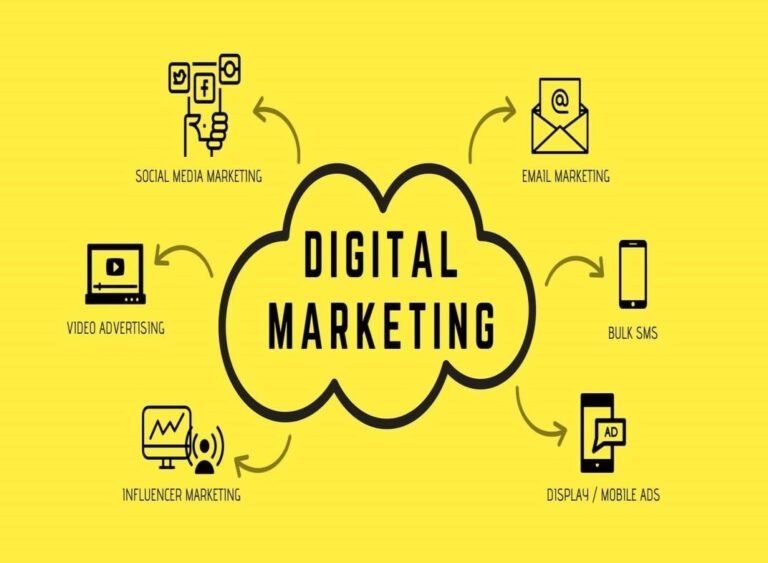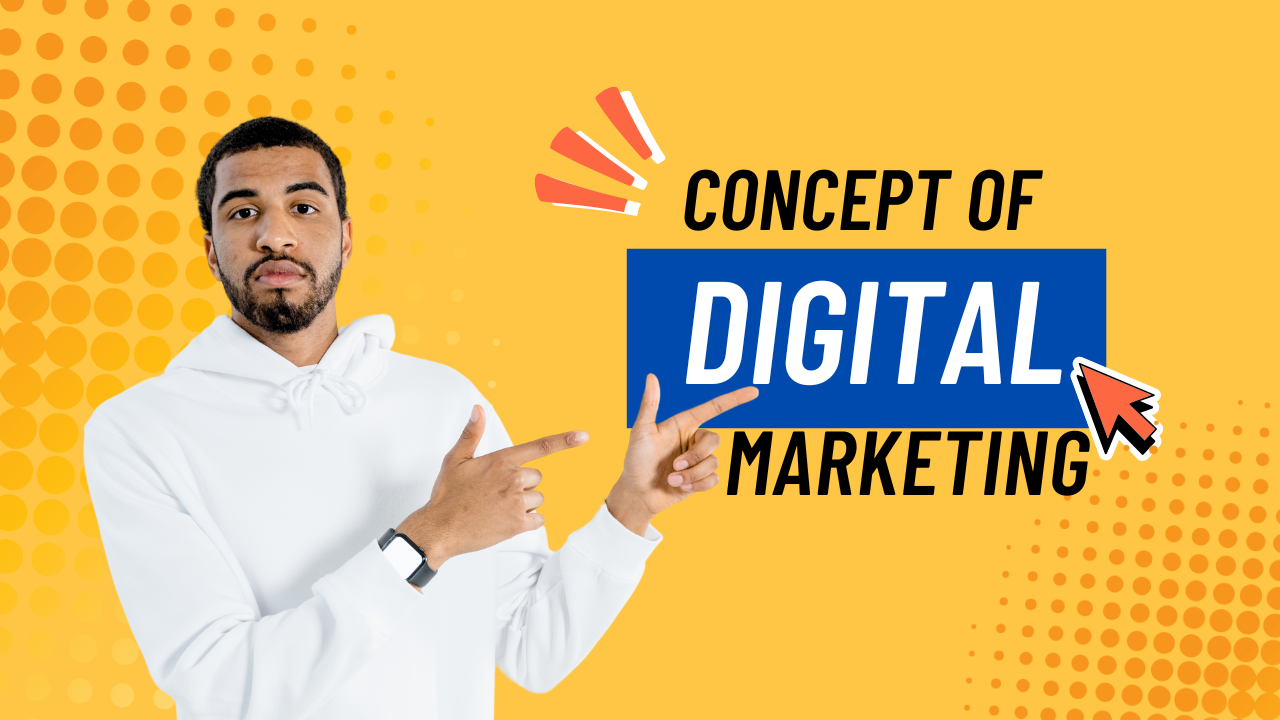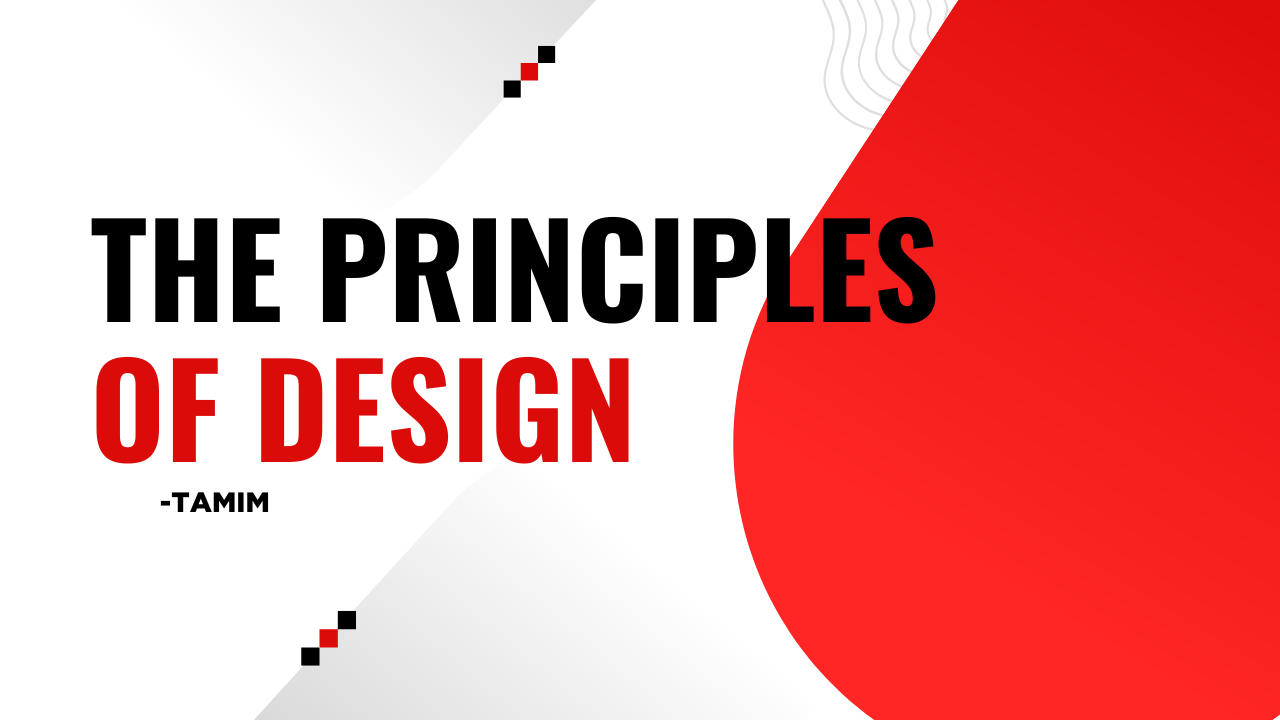Concept Of Digital Marketing in 2025 by Job Edu BD
Concept Of Digital Marketing in 2025 by Job Edu BD
1. Digital Marketing
1.1Digital marketing refers to the practice of promoting products or services using digital channels and technologies. It encompasses various online marketing strategies and tactics to reach and engage with a target audience, drive website traffic, generate leads, and ultimately increase sales and brand awareness. Digital marketing leverages the internet and digital platforms such as search engines, social media, email, websites, mobile apps, and other digital channels to connect with potential customers and build relationships. It involves a combination of creative content creation, targeted messaging, data analysis, and optimization techniques to effectively reach and engage the desired audience. The goal of digital marketing is to create a strong online presence, attract and retain customers, and drive business growth through various online marketing channels. It allows businesses to reach a wider audience, track and measure the effectiveness of their marketing efforts, and make data-driven decisions to optimize their strategies.

2. Types of Digital Marketing
There are various types of digital marketing available to businesses. Here are some common types of digital marketing:
2.1 Search Engine Optimization (SEO): SEO involves optimising your website to improve its visibility in search engine results.
It includes techniques like keyword research, on-page optimisation, link building, and technical optimisations to enhance organic search rankings.

2.2 Pay-per-Click Advertising (PPC): PPC advertising involves placing ads on search engines or other platforms, and you pay only when someone clicks on your ad. Google Ads is a popular PPC platform that allows businesses to bid on keywords and display targeted ads to their audience.

2.3 Social Media Marketing: This strategy involves leveraging social media platforms such as Facebook, Instagram, Twitter, and LinkedIn to engage with users, build brand awareness, and drive traffic to your website. It includes posting regular updates, sharing content, running ads, and engaging with the audience.
2.4 Content Marketing: Content marketing focuses on creating and distributing valuable, relevant, and consistent content to attract and retain a target audience. This can include blog posts, articles videos, info graphics, podcasts, and more. The goal is to provide valuable information that establishes your brand as a trusted resource and drives engagement.
2.5 Email Marketing: Email marketing involves sending targeted messages and promotional materials to a group of subscribers who have opted in to receive communications from your brand. It can be used to nurture leads, send product updates, deliver personalized offers, and build customer loyalty.
2.6 Influencer Marketing: Influencer marketing involves collaborating with influential individuals or content creators who have a large following and influence within a specific niche. By partnering with them, businesses can reach their target audience and leverage the influencer’s credibility to promote their products or services.
2.7 Website and User Experience Optimization: Optimizing your website and user experience is crucial for digital marketing success. This includes ensuring your website is mobile-friendly, has fast loading times, easy navigation, clear call-to-action buttons, and a user-friendly interface.
2.8 Analytics and Data Tracking: Digital marketing allows you to gather extensive data about your campaigns and audience. By utilizing analytics tools, you can track and measure the performance of your marketing efforts, identify areas for improvement, and make data-driven decisions to optimise your strategies.
3. Uses of Digital Marketing
Digital marketing offers numerous uses and benefits for businesses of all sizes and industries. Here are some key uses of digital marketing:
3.1 Increased Online Visibility: Digital marketing allows businesses to enhance their online presence and visibility. Through techniques such as search engine optimization (SEO), businesses can improve their website’s visibility in search engine results, leading to increased organic traffic and brand exposure.
3.2 Targeted Audience Reach: With digital marketing, businesses can precisely target their ideal audience. Through techniques like social media advertising, pay-per-click (PPC) advertising, and audience segmentation, businesses can reach specific demographics, interests, behaviors, and geographic locations. This targeting helps maximize the effectiveness of marketing efforts and generate higher-quality leads.
3.3 Lead Generation and Customer Acquisition: Digital marketing provides businesses with various channels to generate leads and acquire new customers. By utilizing strategies such as content marketing, email marketing, and landing page optimization, businesses can attract potential customers, capture their contact information, and nurture them through the sales funnel.
3.4 Improved Customer Engagement and Relationship Building: Digital marketing allows businesses to engage with their audience on a more personal level. Through social media platforms, email marketing, and interactive content, businesses can establish direct communication, respond to customer inquiries, gather feedback, and build stronger relationships with customers.
3.5 Enhanced Brand Awareness and Brand Building: Digital marketing enables businesses to create and strengthen their brand presence. By consistently delivering valuable content, engaging with the audience, and maintaining an active social media presence, businesses can increase brand visibility, recognition, and loyalty.
3.6 Data-driven Decision Making: Digital marketing provides valuable data and analytics to measure the performance of marketing campaigns. By tracking metrics such as website traffic, conversion rates, email open rates, and social media engagement, businesses can gain insights into what works and make data-driven decisions to optimize their marketing strategies for better results.
3.7 Cost-effective Marketing Solutions: Digital marketing often offers more costeffective alternatives compared to traditional marketing methods. For example, social media advertising and PPC campaigns allow businesses to set budgets, target specific audiences, and track the return on investment (ROI) more effectively.
3.8 Global Reach and Expansion Opportunities: Digital marketing enables businesses to reach a global audience and expand their market reach. With the internet’s global nature, businesses can promote their products or services to customers worldwide, breaking down geographical barriers and accessing new markets.
3.9 Real-time Monitoring and Adaptation: Digital marketing allows businesses to monitor their campaigns in real-time. With immediate access to data and analytics, businesses can quickly identify underperforming campaigns, make necessary adjustments, and optimize marketing efforts to maximize results.
3.10 Competitive Advantage: Embracing digital marketing provides businesses with a competitive edge. Companies that effectively leverage digital marketing strategies can stand out in the market, reach customers more efficiently, and adapt to changing consumer behaviors and preferences.
4. Software for Digital Marketing
There are numerous software tools available to assist with different aspects of digital marketing. Here are some commonly used software categories for various digital marketing activities:
4.1 Analytics and Data Tracking: • Google Analytics: Provides comprehensive website and app analytics, including traffic sources, user behavior, conversions, and more. • Adobe Analytics: Offers advanced analytics and reporting capabilities for tracking and analyzing customer data. |
4.2 Search Engine Optimization (SEO): • SEMrush: Offers a suite of SEO tools for keyword research, competitive analysis, site auditing, rank tracking, and backlink analysis. • Moz: Provides SEO tools for keyword research, link building, site auditing, and rank tracking. |
4.3 Social Media Management: • Hootsuite: Enables scheduling and managing social media posts across multiple platforms, monitoring brand mentions, and analyzing social media performance. |
• Buffer: Allows scheduling and publishing social media content, managing multiple accounts, and analyzing post-performance. |
4.4 Email Marketing: • Mailchimp: Offers email marketing automation, customizable templates, audience segmentation, and detailed campaign analytics. • Constant Contact: Provides email marketing tools, including templates, list management, autoresponders, and reporting. |
4.5 Pay-per-Click (PPC) Advertising: • Google Ads: Google’s advertising platform for running search, display, video, and app ads across Google’s network. • Microsoft Advertising: Allows businesses to run PPC campaigns on the Bing search engine and Microsoft’s advertising network. |

Tamim
Certified Trainer & Assessor (NSDA)
Instructor – Fenchuganj Technical Training Center
CBA Level-4 & CBT&A Level-4
Graphics Design Level-3
Graphics Design for Freelancing Level-3 & 4
Computer Operation Level-2 & 3
It Support Services Level-3
Programmable Logic Controller (PLC) Level-4
Digital Marketing Level-3, 4 & 6




Leave a Reply